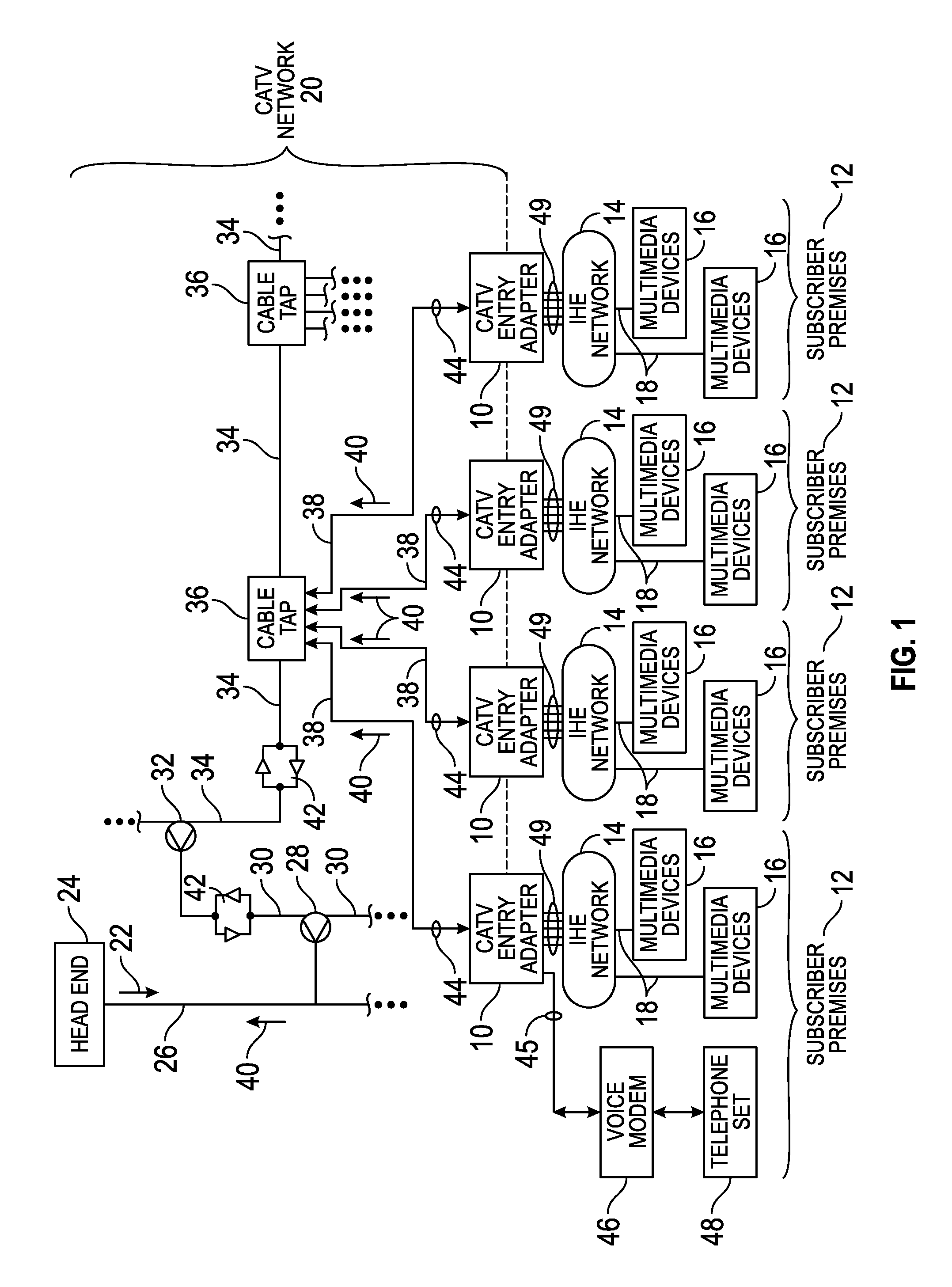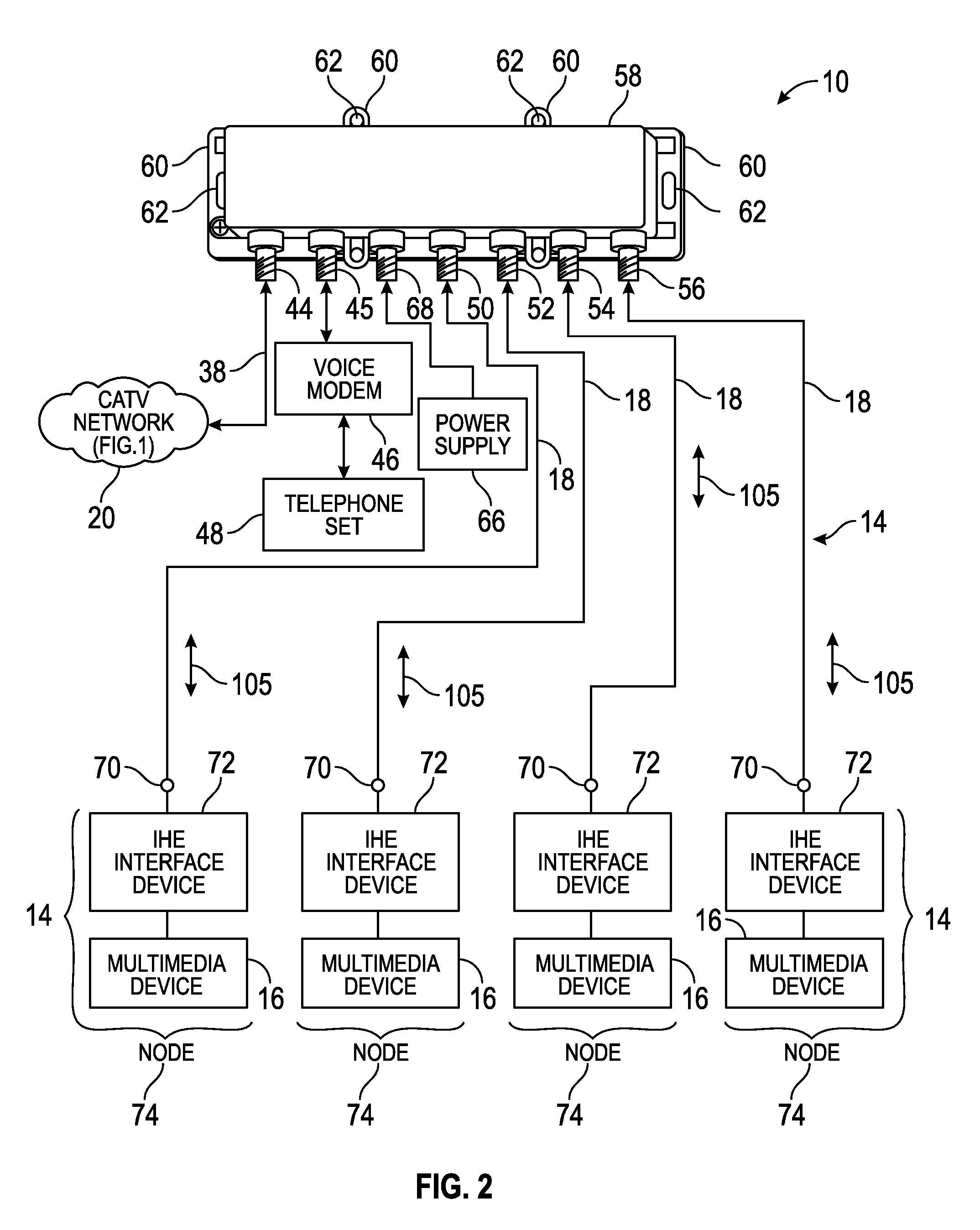CATV entry adapter and method for distributing CATV and in-home entertainment signals
a technology of catv and entry adapter, which is applied in the direction of closed circuit television system, electrical cable transmission adaptation, broadband local area network, etc., can solve the problems of inability to communicate active catv signals under power loss conditions, adversely affecting the active signal conducted, and most emta devices used for passive catv signal communication are not presently ihe-enabled, so as to prevent the conduction of ihe signals and facilitate its use.
- Summary
- Abstract
- Description
- Claims
- Application Information
AI Technical Summary
Benefits of technology
Problems solved by technology
Method used
Image
Examples
Embodiment Construction
[0044]One embodiment of a plurality of CATV entry adapters 10 according to the invention is shown in FIG. 1. Each CATV entry adapter 10 is located at a subscriber premises 12 and forms a part of an In-Home Entertainment (IHE) network 14. Multimedia devices 16 are connected to each IHE network 14 in each subscriber premises 12. Each multimedia device 16 communicates multimedia content, or IHE signals, between itself and other IHE multimedia devices using IHE network 14, which is formed in part by the preexisting coaxial cable infrastructure (represented generally by coaxial cables 18) present in subscriber premises 12. Examples of multimedia devices 16 are digital video recorders, computers, data modems, computer game playing devices, television sets, television set-top boxes, and other audio and visual entertainment devices. Often, but not by way of limitation, the multimedia devices 16 constitute active subscriber equipment.
[0045]CATV entry adapter 10 is also a part of conventional...
PUM
 Login to View More
Login to View More Abstract
Description
Claims
Application Information
 Login to View More
Login to View More - R&D
- Intellectual Property
- Life Sciences
- Materials
- Tech Scout
- Unparalleled Data Quality
- Higher Quality Content
- 60% Fewer Hallucinations
Browse by: Latest US Patents, China's latest patents, Technical Efficacy Thesaurus, Application Domain, Technology Topic, Popular Technical Reports.
© 2025 PatSnap. All rights reserved.Legal|Privacy policy|Modern Slavery Act Transparency Statement|Sitemap|About US| Contact US: help@patsnap.com



